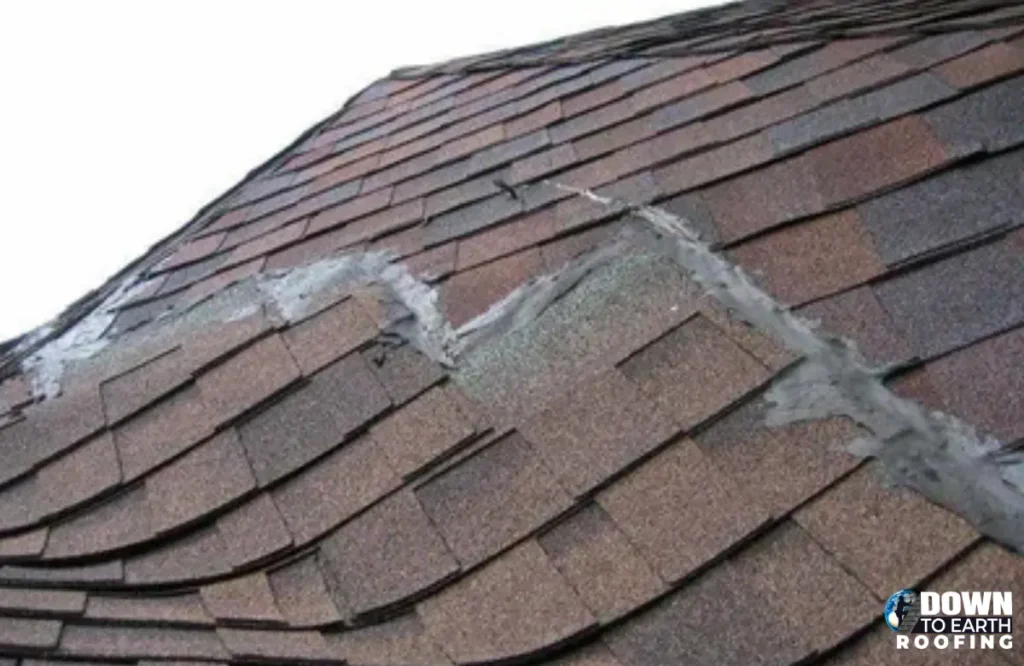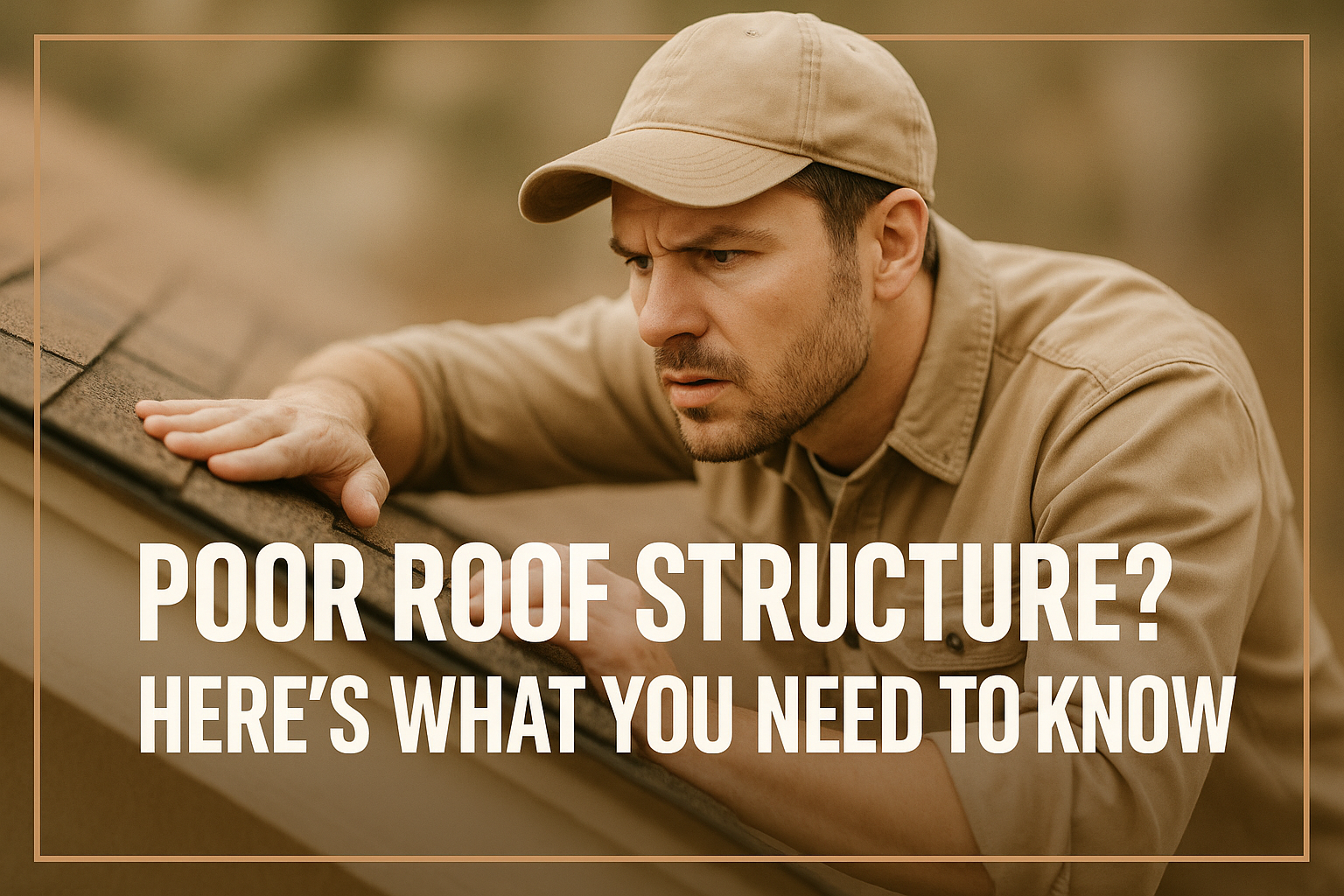Your roof does more than just keep out the rain; it protects your entire home. But what happens when your roof isn’t built right? A poor roof structure can cause serious problems, from leaks and sagging to costly damage to your home’s foundation.
If you’ve ever noticed cracks in your ceiling, uneven rooflines, or strange dips on your roof, it could be a sign of structural issues. Understanding what causes these problems and how to fix them is the first step toward keeping your home safe, comfortable, and strong for years to come.
What Poor Roof Structure Looks Like
Early detection of indications of bad roof structure can help you avoid big damage. These are some of the visual and structural red flags to be observed.
1. Sagging Rooflines
A drooping roofline is one of the most obvious indications of trouble. When you see your house out the window and you can tell that the ridge is not straight, then there is something wrong with the rafters or trusses inside.
2. Cracked Ceilings or Walls
A weakening of the roof structure puts stress on the walls and ceilings. You may notice cracks where ends of walls are joined to the ceiling – a sure sign that there is something wrong with something above.
3. Uneven Roof Surface
Undulating roof shingles or irregularities may represent improper framing or subsidence under the roof covering. The areas tend to be hotspots of leaks.
4. Roof Leaks and Water Stains
One of the signs of structural weakness is water intrusion. The design of the roof or incorrect flashing may cause water to flow into the attic, causing mould, rot and insulation damage.
5. Noisy Roof During Wind or Storms
When your roof is creaking or making popping sounds in times of strong winds, that may indicate that the structure is not securely fixed and properly balanced.

Understanding Poor Roof Structure
The Importance of a Strong Roof Design
The beginning of a good roof is good design and construction. Each roof (flat, gabled, hip, etc.) should be weight-bearing, slope-bearing, and ventilated. Poorly architected roofs have a shorter lifespan as they are unable to support weight, wind or water appropriately.
An example was the roofing design of the bungalows which usually feature wide eaves to shade the building; however, when these eaves are not supported correctly they can overhang the building. Equally, the roof profiles that have valleys should have pitch angles that are correct to direct the water effectively. Minor failure in planning will create serious problems in the future.
Roof Design and Architecture Mistakes
Let us have a closer look at some of the common architectural errors that lead to roof-related problems:
- Standing water is caused by a lack of pitch on low-slope roofs.
- Poor alignment of roof lines on additions results in weak connections.
- Overloading due to heavy materials or snow accumulation.
- Poor ventilation that would trap moisture and lead to rot.
The design architecture of every home roof must be appropriate in terms of climatic conditions, structure, and type of material. An apt roof structure spreads the weight evenly, has flow of air and does not get damaged in the weather.
The Role of Roof Designers and Builders
The design and construction of roofs are important in the provision of durability. Structural loads, materials and drainage are all planned and computed by a roof designer. When these steps are not taken seriously or even omitted, the life of the roof is tremendously reduced.
Residential roof designs are also done in accordance with codes of safety by professional roof designers. They consider the speed of wind in the area, the amount of rain and the load of snow needed, which is not always taken into account by DIY roofing.
Structural Components That Matter
Every part of your roof works together:
- Trusses and rafters provide the main support.
- Roof decking distributes weight evenly.
- Underlayment and shingles protect from moisture.
- Flashing and vents prevent water buildup.
When any of them is not well installed, then the whole structure is susceptible to attacks. Indicatively, the weak trusses will bow out as time progresses and your roof lines on houses will come down. Wood can also rot due to poor ventilation and traps of humidity, particularly in attics.
Examples of Poor Roof Structure in Action
These are a few of the real-life examples that can be faced by homeowners:
- An extension made onto a sloped roof and not flashed against the verge of the slopes, thus causing leakages at the junction.
- Front entrance roof designs were added without any support beams, through which cracks above the doorway would occur.
- Unventilated attic that retains hot air – which leads to distorted shingles and big electric bills.
These instances explain why contracting a competent roofing inspector or structural engineer is a viable measure that can avoid catastrophes in the future.
Benefits of a Well-Designed Roof
It is not only the looks of the roof that matter, but the performance, protection, and tranquility of a properly designed roof.
Here’s why a strong, well-designed roof matters:
- Better weather resistance: Can withstand winds, heavy snow and heavy rain.
- Longer lifespan: On solid framing, the lifespan of materials is increased.
- Energy efficiency: The correct ventilation and insulation will ensure that your home is cooler during summer and warmer during winter.
- Lower repair costs: Design precision at earlier stages saves on long-term maintenance.
- Increased property value: A properly designed roof increases the curb appeal and resale.
Conclusion
The bad roof structure can slowly ruin your house without your notice but the good news is that it can be avoided. With the right design, quality materials and frequent maintenance, you can be sure of your roof holding up in all seasons.
In case you are afraid that your roof has some design or structural problems, do not wait until the little things become big problems. Get an inspection and professional advice with trusted persons by contacting.
To explore more, visit Down To Earth Roofing your local experts in reliable roof design, inspection, and repair services.
FAQs
1. What causes poor roof structure?
Poor roof structure usually happens due to bad design, weak materials, or poor construction practices.
2. Can a poorly designed roof be fixed?
Yes. A professional roofer can reinforce weak areas, improve drainage, and correct design flaws with proper adjustments.
3. How do I know if my roof is structurally sound?
Look for sagging, leaks, uneven lines, or cracks in walls. A roof inspection is the best way to confirm.
4. What roof designs are most durable?
Gable, hip, and metal roofs are among the most durable and energy-efficient roof designs for homes.
5. How often should I inspect my roof structure?
It’s best to schedule a professional roof inspection once a year, especially after harsh weather.


